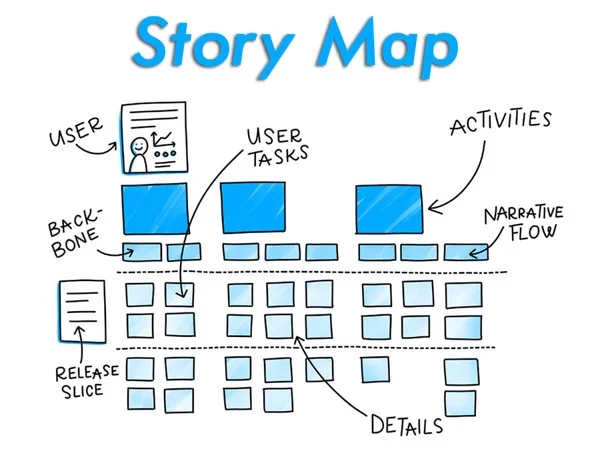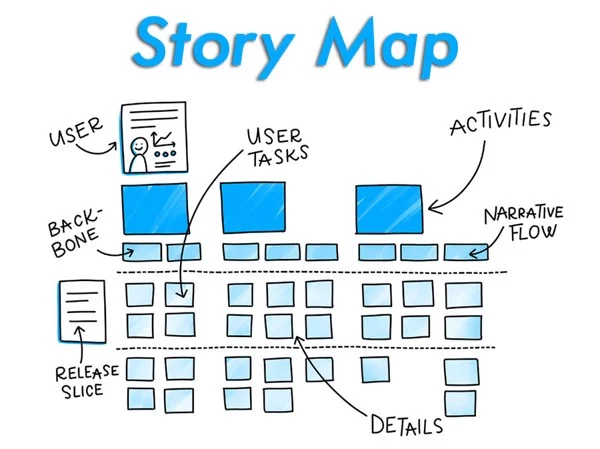The Art of Story Mapping
Product development teams can visualise the user journey and break down features into user stories using story mapping. In essence, story maps show the relationship between the product's features, functionalities, and user needs as a visual representation of the product backlog. Teams can use this tool to create user-centric product roadmaps, ensuring alignment between the development process and the company's objectives.
Linking Story Mapping with ROI
1. Aligning Development Efforts with Business Objectives: Story mapping helps teams grasp the bigger picture of a product's development history. By visualising user needs and their corresponding features, businesses can focus on developing functionalities aligned with their overarching goals. By aligning development efforts with value propositions and ROI, the potential of the project is maximised.
2. Selecting Features Based on Value: Through story mapping, product teams can identify the most critical features that drive the highest value to users and the business. By prioritising these features, development efforts are channelled into building high-impact functionalities first, resulting in an early realisation of value.
3. Assessing development capacity realistically is possible with story mapping. Organisations can make better decisions regarding which features are feasible within a given timeline and resource constraints by understanding the velocity of their development team and the implementation time. As a result, development capacity is used efficiently, and projects do not exceed their allocated budgets.
4. Story mapping facilitates real-time evaluation of the potential value generated by each completed feature as development progresses. By continuously assessing their strategies, prioritising emerging opportunities, and pivoting if needed, businesses can increase their return on investment.
Conclusion
To maximise business value in software development, it is essential to understand ROI and use story mapping strategically. To ensure they are building the right things, businesses must align development efforts with business objectives, prioritise features based on value, optimise development capacity, and identify value-generating opportunities.





